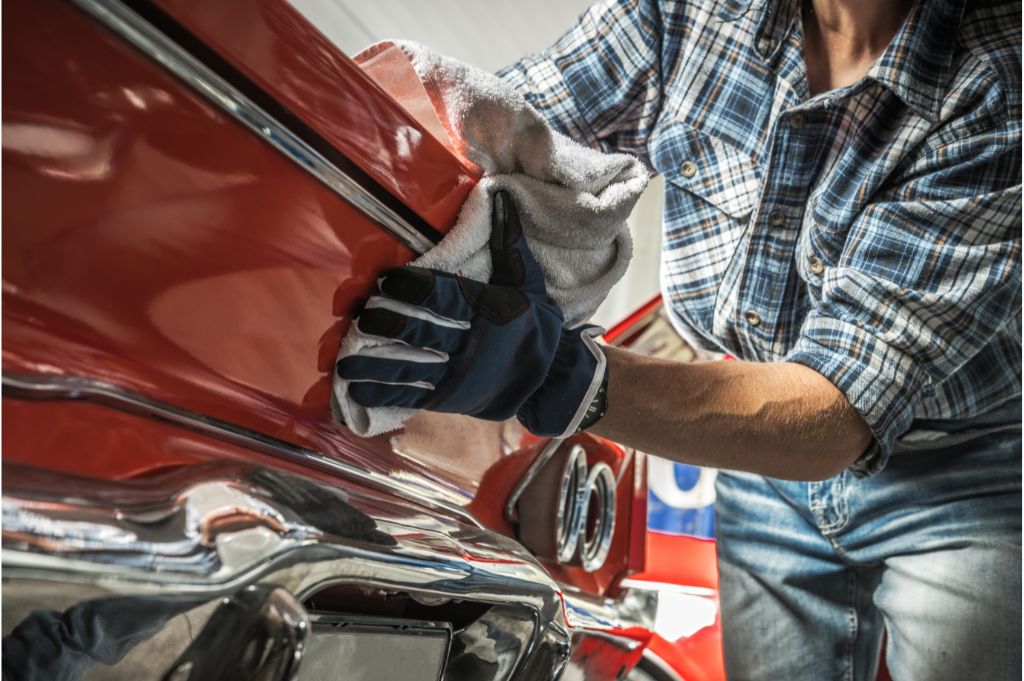Table of Contents
Toggle
Auto Body Restoration – Dallas Auto Paint
Are you considering restoring your car’s exterior to its original splendor? Whether it’s a classic car or just an old vehicle that needs some TLC, auto body restoration can be a challenging but rewarding process. However, lacking the appropriate method and understanding, it may also result in feelings of frustration and disillusionment. That’s why we’ve put together this guide on the 5 essential steps for a successful auto body restoration. From evaluating the extent of the damage to choosing the appropriate tools and materials, these suggestions will assist you in attaining impressive outcomes and relishing the experience of driving your cherished car once more!
Identifying the Damage & Estimating Costs
After you’ve been in a car accident, the last thing you want to do is further damage your vehicle by driving it around before getting repairs. But, unless the damage is significant, most people don’t want to go through the hassle and expense of taking their car to an auto body shop. So, how do you know if the damage is bad enough to warrant professional help? In this blog post, we’ll take you through some essential steps for a successful auto body restoration after an accident.
First, you’ll have to evaluate the extent of the damage to your vehicle. This involves examining both the outside and inside of your vehicle for any indications of damage. Once you’ve done that, you’ll need to estimate the costs of repairs. This can be tricky, as there are many factors that will affect the cost of repairs, including the type of damage and the severity of it.
Once you’ve identified the damage and estimated the costs, you’ll need to find a reputable auto body shop to do the repairs. This is important, as not all shops are created equal. Make sure to do your research and get quotes from several different shops before making a decision.
Finally, once you’ve located a shop and completed the necessary repairs, it’s crucial to maintain your vehicle properly to avoid potential accidents or damage in the future. This involves consistently washing and waxing your vehicle, along with monitoring your tires and brakes.
By following these steps, you can ensure that your auto body restoration after an accident goes smoothly and that you get your car back in top condition.
Preparing the Vehicle for Auto Body Restoration
1. Preparing the Vehicle for Restoration
The first step in any auto body restoration is to properly prepare the vehicle. This involves eliminating any rust, dents, or scratches from the vehicle’s exterior. The subsequent action involves sanding the body to achieve a sleek surface. After the body is prepped, it’s time to start painting.
2. Disassembly and Cleaning
Before the auto body restoration process can begin, the vehicle must be disassembled and all parts should be cleaned thoroughly. This will ensure that all rust, dirt, and grime are removed from the frame and components. Ensure to photograph every component before its removal for future reference.
3. Sanding and Priming
Once the vehicle is properly cleaned, you can start sanding down any damaged areas. This includes removing rust spots or dents. You should also use a primer on any bare metal to prevent corrosion during the auto body restoration process. Once this step is finished, it’s time to begin applying paint to your car’s body.
4. Painting
Painting is one of the most important steps in a auto body restoration project. It’s advisable to utilize premium automotive-grade paint for durability and to achieve vivid color options that endure over time. You have the option to either use spray paint or apply paint with a brush for this stage, depending on your preference. Make sure to apply several coats of paint for optimal coverage and protection against wear-and-tear over time.
5. Reassembly
Once you’ve finished all the painting and preparation tasks, it’s time to put the vehicle back together. Ensure that you refer to any photographs you captured prior to disassembling the car to ensure correct positioning of all components during reassembly. If you had to replace any parts during the auto body restoration process, make sure that those are securely fastened as well. Once everything is back together, your auto body restoration project is complete!
Choosing Parts and Materials
There are a few things to keep in mind when choosing parts and materials for your auto body restoration project. First, you must take into account the kind of vehicle you’re dealing with. Classic cars will often require different parts than modern vehicles. You’ll also need to decide what kind of finish you’re looking for. To achieve a finish comparable to that of a factory, you must utilize materials of superior quality. However, if you’re just looking to get the job done, cheaper materials may suffice.
Once you’ve decided on the type of parts and materials you need, it’s time to start shopping around. You can discover auto body parts and materials in various locations. Local auto parts stores can be a good place to start, but they may not have everything you need. Internet-based merchants typically offer a wider array of products, yet it’s crucial to verify the reliability of the source before placing an order. Finally, salvage yards offer an opportunity to acquire inexpensive parts; however, it’s essential to exercise caution to ensure the parts are in satisfactory condition.
Once you’ve gathered all the parts and materials you need, it’s time to start your auto body restoration project!
Removing, Repairing, and Replacing Damaged Parts
The first step in any vehicle restoration is to remove all the damaged parts. This comprises the bumpers, fenders, doors, bonnet, and boot lid. Once these parts are removed, you can assess the damage and start repairing or replacing them as needed.
If any of the parts are beyond repair, you’ll need to source replacements. This can be done either through a junkyard or by ordering new parts from a manufacturer or aftermarket supplier.
Once all the damaged parts are replaced or repaired, you can start putting the car back together. This process is fairly straightforward if you have all the right parts and tools. However, it’s always a good idea to consult with a professional mechanic or body shop just to be safe.
Once the car is back together, you’ll need to clean and detail it. This includes waxing the paint, polishing chrome parts, and cleaning up any areas where rust has formed. Performing this action will restore your car’s appearance to its original, pristine condition!
Finishing Touches: Painting & Detailing
After all of the major body work is completed, it’s time to give your car a fresh coat of paint and add all the finishing touches. This is the perfect opportunity to make your car gleam and distinguish itself from others.
To ensure a professional-looking finish, it’s best to leave the painting to the experts. But if you’re up for the challenge, be sure to follow these tips:
- Begin with a smooth surface by sanding down any imperfections and removing all dust or debris.
- Ensure the primer is applied evenly to achieve a smooth and professional finish to your paint job.
- Choose quality paint – cheap paint may save you money upfront, but it won’t look as good or last as long
- Be patient – don’t rush the job, take your time to get a perfect finish
- Once the paint is dry, it’s time to add all the little details that will really make your car pop. This includes things like chrome trim, emblems, decals, and more. Again, taking your time here will pay off in the end.
By following these steps, you’ll be well on your way to having a stunning auto body restoration that you can be proud of.
Restoring a car is an exciting and rewarding process. By following these essential steps for successful auto body restoration, you can ensure that your project is completed correctly and with the best results possible. Simply ensure that you allocate sufficient time, strategize in advance, adequately prepare the space, utilize high-quality materials, and feel comfortable seeking assistance if necessary during the process. With these five steps in mind plus some hard work and dedication, you should have no problem achieving success when restoring or fixing up any vehicle!
Ask questions!
Like all services, make sure you have a full understanding of what the service will consist of. Ask what kind of paint will be used, ask about the process, and ask about the amount of time the service will take. The more questions you ask, the more confident you will feel about the overall job.
Dallas Auto Paint is a reliable auto body shop you can depend on! The combined experience of our team in automotive work spans more than 25 years. We’ll explain the painting process and we’ll field any questions that you might have. Reach out to Dallas Auto Paint in Dallas, TX at (469) 789-2474 for your vehicle needs!

